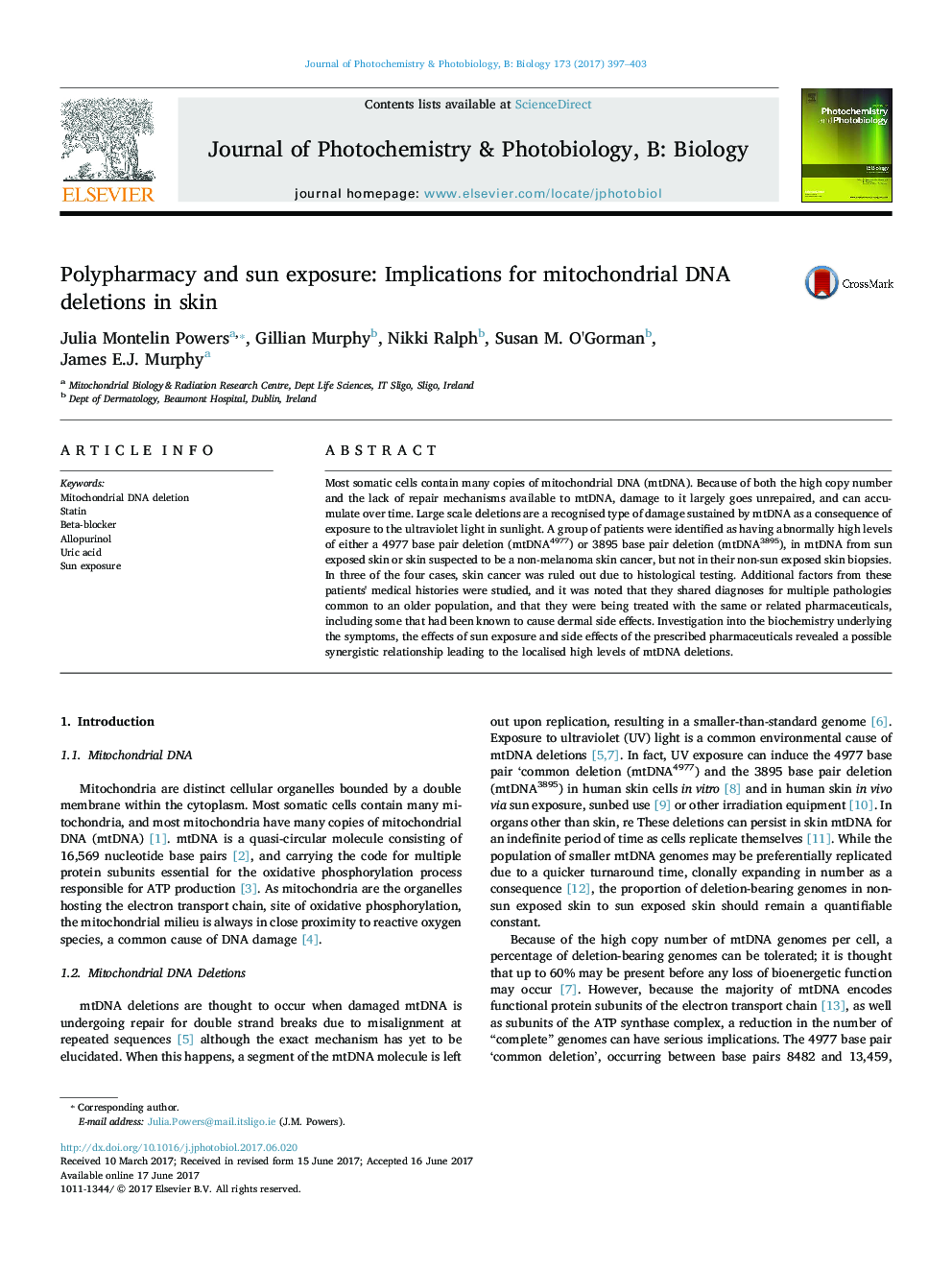| Article ID | Journal | Published Year | Pages | File Type |
|---|---|---|---|---|
| 4754401 | Journal of Photochemistry and Photobiology B: Biology | 2017 | 7 Pages |
Abstract
Most somatic cells contain many copies of mitochondrial DNA (mtDNA). Because of both the high copy number and the lack of repair mechanisms available to mtDNA, damage to it largely goes unrepaired, and can accumulate over time. Large scale deletions are a recognised type of damage sustained by mtDNA as a consequence of exposure to the ultraviolet light in sunlight. A group of patients were identified as having abnormally high levels of either a 4977 base pair deletion (mtDNA4977) or 3895 base pair deletion (mtDNA3895), in mtDNA from sun exposed skin or skin suspected to be a non-melanoma skin cancer, but not in their non-sun exposed skin biopsies. In three of the four cases, skin cancer was ruled out due to histological testing. Additional factors from these patients' medical histories were studied, and it was noted that they shared diagnoses for multiple pathologies common to an older population, and that they were being treated with the same or related pharmaceuticals, including some that had been known to cause dermal side effects. Investigation into the biochemistry underlying the symptoms, the effects of sun exposure and side effects of the prescribed pharmaceuticals revealed a possible synergistic relationship leading to the localised high levels of mtDNA deletions.
Related Topics
Physical Sciences and Engineering
Chemical Engineering
Bioengineering
Authors
Julia Montelin Powers, Gillian Murphy, Nikki Ralph, Susan M. O'Gorman, James E.J. Murphy,
